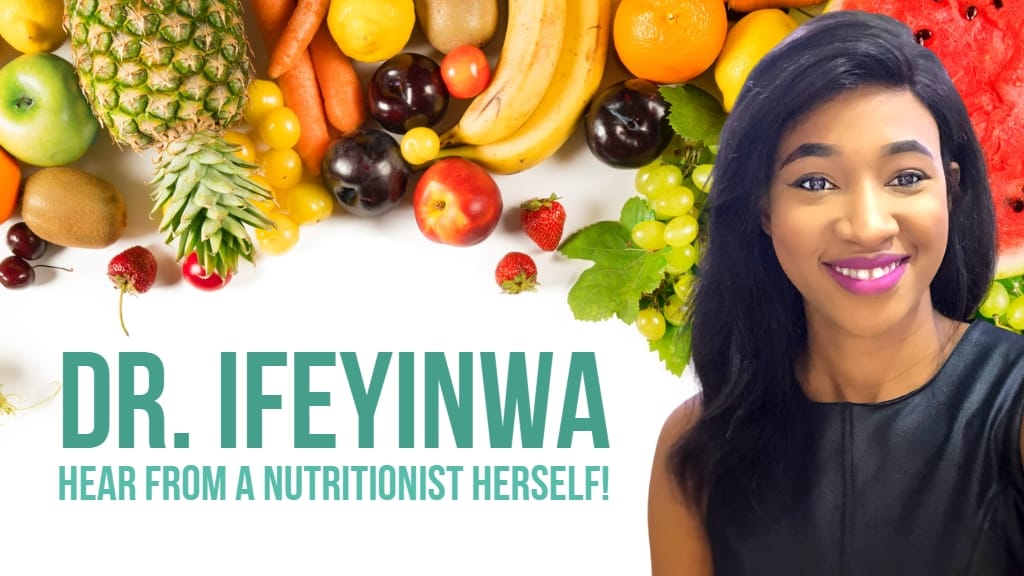
Table of Contents
What is a Plant-based Diet?
Just like every other new trend out there, a diet based on just greens, grains, legumes, and fruits seems to be gaining a lot of traction, especially with health-conscious individuals. A plant-based diet is where consumers focus more on eating plants and their derivatives to get their nutrients. However, with every trend, assessing the true values, especially for children, is critical.
To begin with, children need a balanced and healthy diet to develop and thrive. They also need a diet that includes all food groups and is complete, without any gaps. The big question is, do plants possess all of their needs?
We’re about to find out as we delve deeper into the fascinating world of plant-based diets and determine whether or not parents can adopt this diet for their kids.
Types of Plant-Based Diets
Diets based on plants cannot be summed up in a single box. There are numerous variations of what a plant-based diet food list can look like across various cultures, religions, and ideologies. Vegans, who adhere to the strictest form of a plant-based diet, only consume plants and proteins derived from plants. Vegetarians consume dairy products and eggs but no meat or fish. Pescatarians avoid eating meat and only consume fish, occasionally they will also eat dairy products and eggs.
Ovo-vegetarians consume eggs but do not consume dairy, whereas Lacto-vegetarians eat like vegetarians but do not consume dairy. Lacto-ovo vegetarians consume dairy products and eggs but abstain from all meats and fish. Parents should think about the types of foods being excluded from each of these and how they plan to provide their children with the nutrients from the foods excluded.
What are The Benefits of Plant-Based Diets?

Children who eat a plant-based diet can benefit in several ways. They can offer a wide variety of nutrients, including vitamins, minerals, fibers, and antioxidants, which support well-being and good health. Nutrients like iron, calcium, vitamin A, and even zinc are crucial for the development of any growing child. These nutrients are also best obtained from plants, which are where they are found.
For instance, plants and foods that have been fortified contain non-heme iron, which makes up about 50% of all dietary iron consumed in the US. Nuts, beans, green leafy vegetables, beets, slices of bread, cereals, and other grain products are a few examples of non-heme iron-rich foods. The remaining 50% comes from foods like meat, seafood, and poultry that contain both heme and non-heme forms of dietary iron. Simply put, plant-based foods provide children with 50% of the major nutrients they require for growth.
Another excellent example is eating foods high in vitamin A. Vitamin A helps maintain healthy endothelial cells, which line the interior surfaces of the body, and regulates cell growth and division, or reproduction. These functions all contribute to the remodeling of bones. Additionally, it increases the generation and activity of white blood cells, which is crucial for healthy immune performance.
Sounds great, no? So where can we find excellent Vitamin A sources? in plant-based food? Sweet potatoes, carrots, spinach, mangoes, and sweet red and orange bell peppers are just a few of the foods that are excellent sources of vitamin A. A cup of boiled sweet potato puree provides a 6-month-old with more than 50% of the daily recommended amount of vitamin A.
Over time, the body suffers from a diet high in processed foods and low in fresh produce, especially for a growing child. According to the CDC, 4.7 million kids and teenagers were affected by the 19.7% obesity prevalence rate. A diet based on plants is full of phytonutrients that fight disease and has also been linked to a lower risk of developing chronic diseases such as obesity, diabetes, and heart diseases, which are becoming increasingly common in children.
Now some scholars argue that the obesity rates can be curbed greatly when more families adopt plant-based diets, however, pediatricians and dieticians are finding more children who are on plant-based diets to be more interested in processed carbs, and carb heavier options than fruits, vegetables, and whole foods.
Now that we are aware of the advantages, let’s look at some disadvantages of feeding children a plant-based diet.
What are The Risks of a Plant-Based Diet?
Despite these potential benefits, plant-based diets can pose some risks for children. A major concern is that plant-based diets can be low in essential nutrients such as protein, zinc, iron, vitamin B12, and omega-3 fatty acids, which are important for growth and development. The risk of nutritional deficiency increases with diet restriction and the age of the child. Protein quantity and quality, iron, zinc, selenium, calcium, riboflavin, vitamins A, D, and B12, as well as essential fatty acids, are nutrients that may cause concern.
According to a peer-reviewed study by Kiely M. E., Vegan children are especially vulnerable due to insufficient supply and/or excess dietary fiber as well as other components that limit bioavailability. This raises many concerns as not many families understand these implications and might unknowingly put their children at risk of developing nutrient deficiencies that can affect neurological and developmental functions.
A typical example is diets that exclude dairy and other animal products. These can result in lower intakes of calcium, vitamin D, and vitamin B12, which can lead to the development of rickets and anemia. Such deficiencies are particularly concerning for young children who are still developing and growing, as this can lead to brittle bones, deformation, and even fatigue. Studies show that a plant-rich diet for children has more statistics of children being at higher odds of being underweight and malnourished than otherwise. Which might help curb the current public health issues of obesity but might also lead to a new public health issue.
Another concern with plant-based diets is they can be high in carbohydrates and low in healthy fats, which can lead to blood sugar imbalances and unhealthy weight gain. This counters the benefits of reducing obesity especially if the child’s diet lacks variety.
Finally, plant-based diets may lack flavor, which turns them off to kids and prevents them from consuming enough of the necessary nutrients. Children who are picky eaters and are more drawn to highly processed carbohydrates won’t find a plant-based diet exciting because the flavors need to be developed slowly and intentionally while animal proteins tend to be flavorful by nature with extensive cooking methods.
Finding the risks and advantages of plant-based diets prompts the worrying question of “How can we truly maximize a plant-based diet without endangering a child’s health?
Maximizing Plant-based Diets
With any child, creativity is always the best place to start. The key to doing this successfully is simply reviewing the choice of ingredients, the form in which the meal is served, and the feeding language of the child. For example, a child who is inclined to eat only savory purees will need more legumes and grains in their diet. Fruits wouldn’t be the most appealing as those tend to be on the sweeter side. Rich umami-flavored foods like mushrooms, nutritional yeast, tomatoes, and even seaweed would add boosts of flavor to meals and increase the child’s curiosity and interest in a plant-based diet.
For plant-based diets, iron and B-12 vitamins are major concerns as the foods with the highest amounts of these nutrients are not plant-based. Studies show that children who are on Vegan or vegetarian diets can thrive significantly only if supervised dietary support is provided and certain nutrients like vitamin B or iron are supplemented outside of food. However, there is still a debate as to how effective and diverse these meals can be especially in today’s fast-paced world, where children are not fed multiple kinds of foods, to begin with.
To combat this, adding rich plant-based fluids is key to infusing vitamin B-12 into their diet. A typical fluid that is great for increasing B12 in a child’s diet is fish bone broth for pescatarians or a rich vegetable broth for Vegans and some vegetarians. Must-have ingredients for the broth would be brewer’s yeast or nutritional yeast, olives, seaweed, celery, marmite, onions, garlic cloves, and ginger. A slow boil of these hearty ingredients makes for a rich and flavorful broth that can be paired with most meals.
The next step in maximizing a plant-based diet would be to increase variety and planning. In contrast to omnivores, it’s very simple to omit important nutrients from a diet that only consists of fruits and vegetables. When there is little variety in the meals, legumes can become boring. To combat this, create clear meal plans that each contain at least
- 2-3 sources of high-quality plant proteins,
- 1 source of complex carbohydrates, and at least
- 2-3 abundant sources of healthy fats and fibers.
Parents must prepare meals weeks in advance, making sure to include the necessary variety of grains, legumes, oil, nuts, seeds, mushrooms, and vegetables. Divide the meals into the proper serving sizes for the child’s age and make sure they can finish each one.
To ensure that a child can meet their nutritional needs for the day in 24 hours, avoid serving them additional meals throughout the day. Finally, to ensure that the development of a child who is on a plant-based diet for kids is maximized, parents must prioritize the following nutrients. B12, calcium, zinc, vitamin D, and iron. These nutrient sources are as follows:
- Zinc: chickpeas, potatoes, nuts, organic fortified cereal, dried beans, pumpkin seeds
- Calcium: broccoli, dried beans, soybeans, kale, sesame seeds, chia seeds, baobab fruit
- Vitamin B12: vitamin-fortified cereals, bread, soy milk, nutritional yeast, or in some supplements
- Iron: chickpeas, lentils, kidney beans, tofu, dried fruits, whole grains, kale, cabbage, broccoli,iron-fortified bread, and cereals
- Vitamin D: fortified cereals, fortified milk substitutes, mushrooms, or in some supplements
Conclusion
Plant-based diets for children can be healthy and nutritious if planned and managed carefully with expert advice. A balanced plant-based diet can offer numerous benefits, including the potential for reducing the risk of chronic diseases. Moreover, plant-based diets can promote environmental sustainability and contribute to a reduction in greenhouse gas emissions.
However, parents, caregivers, and healthcare professionals must be vigilant in ensuring that children who follow plant-based diets have access to all the nutrients required for optimal growth and development. A plant-based diet may not be suitable for all children, and some may require alternative dietary patterns due to health reasons. Therefore, it is always advisable to seek expert advice when considering plant-based diets for children.










